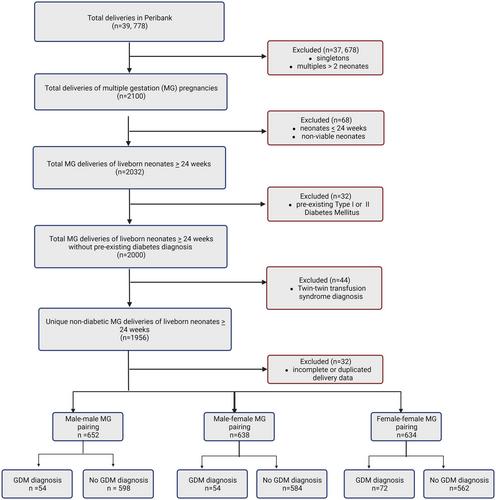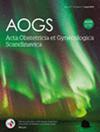Fetal sex and the development of gestational diabetes mellitus in gravidae with multiple gestation pregnancies
Abstract
Introduction
There is an increasing incidence of pregnancies with twin gestations. One outcome more likely to occur with multiple gestations is gestational diabetes mellitus. Studies have suggested that in singleton pregnancies, fetal sex may affect insulin resistance. However, the effects of fetal sex in twins and the development of gestational diabetes mellitus are unknown. We hypothesized that rates of gestational diabetes mellitus and degree of insulin resistance might vary in twin gestations based on the fetal sex pairing: male–male, male–female or female–female. We aimed to employ a large population-based database to ascertain any correlations between fetal sex and gestational diabetes mellitus in multifetal gestations.
Material and methods
A two-hospital, single academic institution database comprised of over 39 000 participants with pregnancy data from August 2011 to January 2022 was employed. All twin deliveries of live-born neonates >24 weeks’ gestational age from gravidae without preexisting diabetes or twin–twin transfusion syndrome were included. Entries were then grouped based on the fetal sex of the pairing. The presence or absence of gestational diabetes and type of gestational diabetes – diet-controlled (gestational diabetes mellitus classification A1) vs medication-controlled (gestational diabetes mellitus classification A2) – were identified. Statistical analysis was performed using a generalized linear mixed method, and a P-value ≤0.05 was considered statistically significant.
Results
We identified 1924 twin deliveries that met the inclusion criteria in our database (male–male =652; male–female = 638; female–female = 634). We found no association between fetal sex pairing and the development of gestational diabetes mellitus. There was a significant association between the fetal sex pairing and the type of gestational diabetes mellitus developed, with 32.0% of male–male twins, 33.3% of male–female twins and 58.3% of the female–female twin deliveries associated with medication-controlled gestational diabetes classification A2: male–female vs female–female (P = 0.05) and male–male vs female–female (P = 0.046).
Conclusions
While gestational diabetes mellitus is of multifactorial origin, we found a significant association between the fetal sex pairing and the treatment needed for gravidae with twins who develop gestational diabetes mellitus. A higher proportion of female–female twins was associated with gestational diabetes classification A2 compared with male–female or male–male deliveries. Further research on the physiology driving this association is warranted.


 求助内容:
求助内容: 应助结果提醒方式:
应助结果提醒方式:


